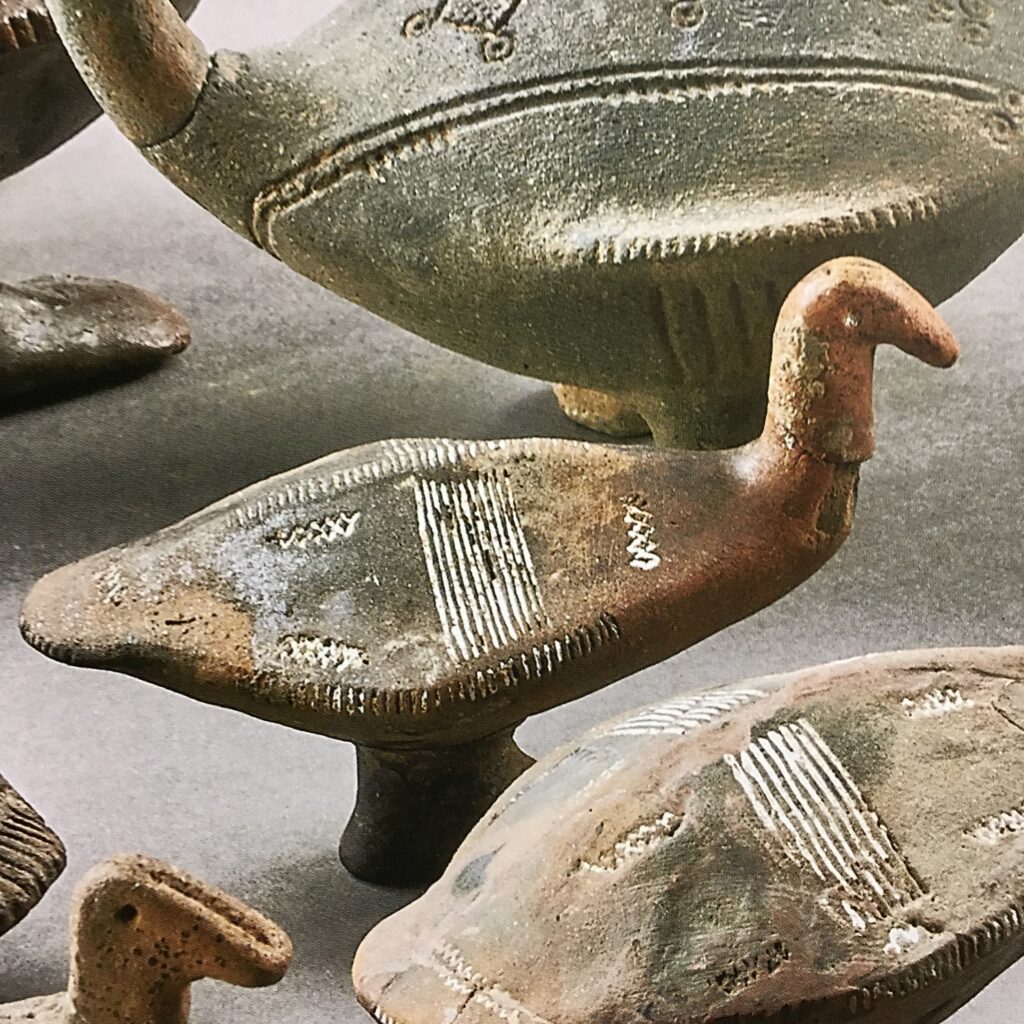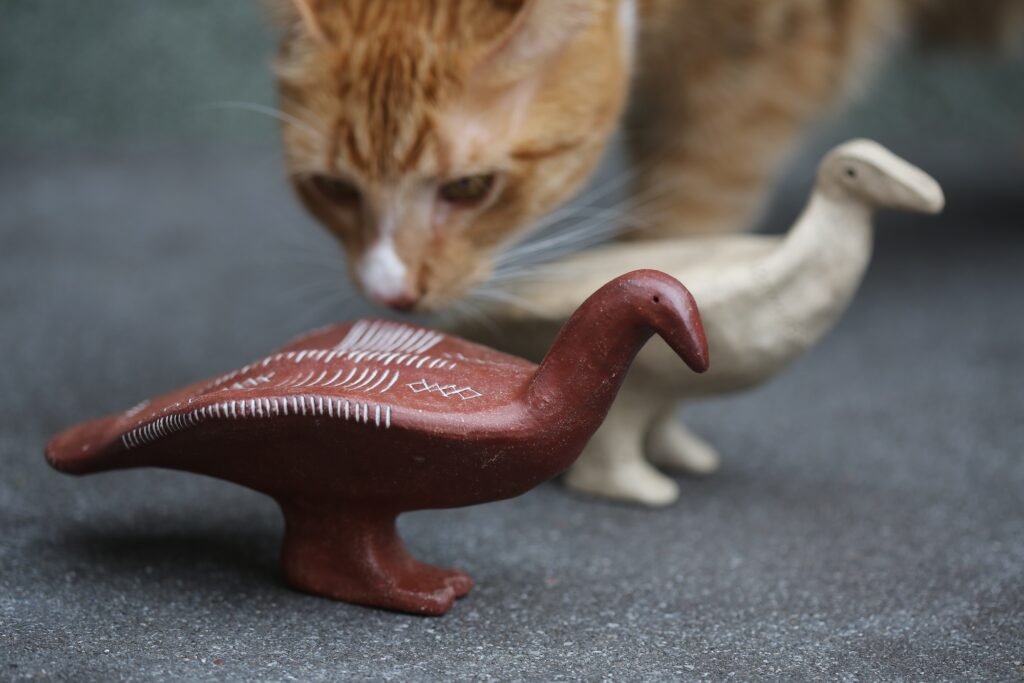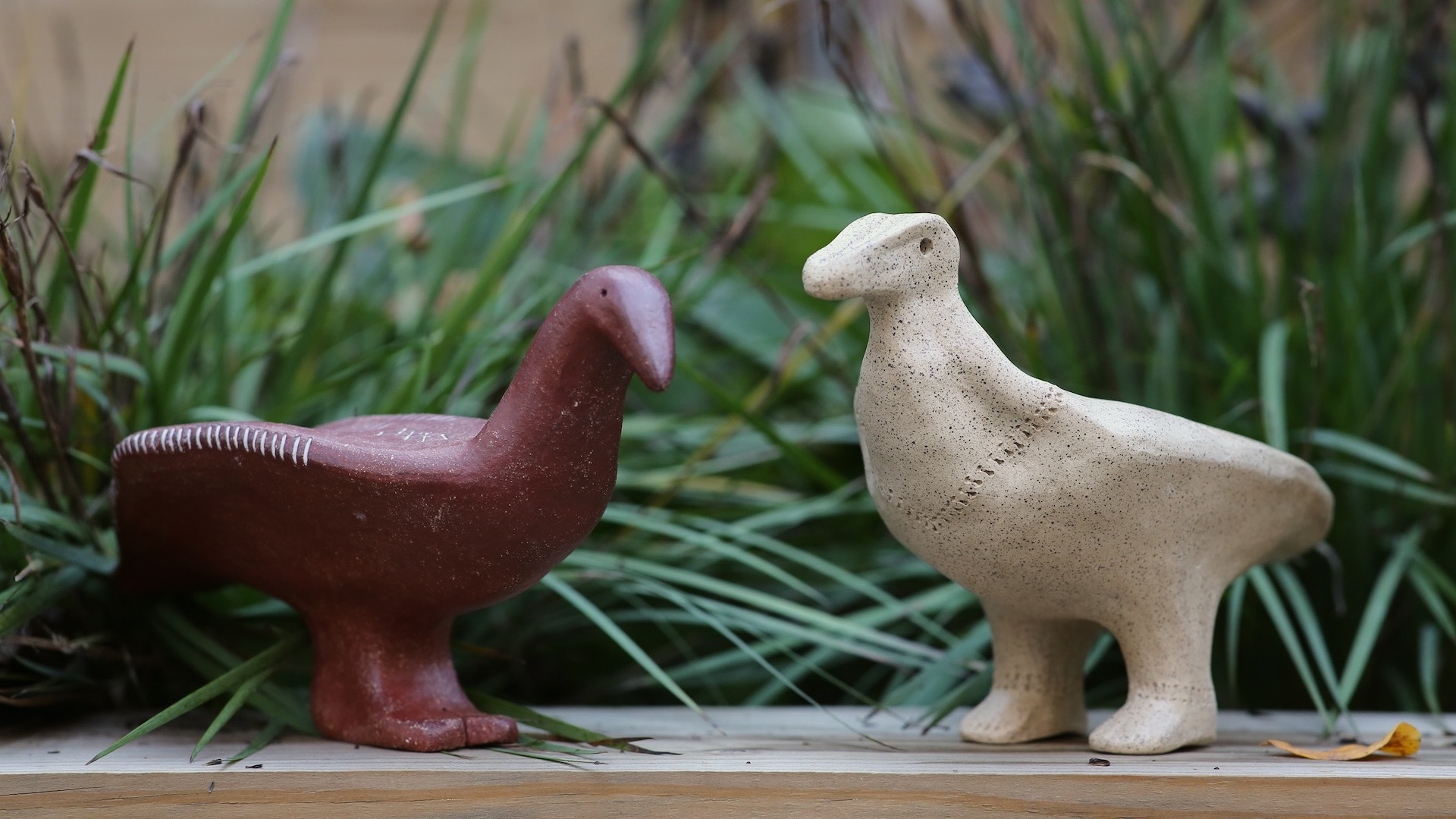Birds in ancient art and objects
Birds have been important to people all over the world for millennia, both practically and metaphorically, with bird-shaped objects and illustrations dating back almost as far as we have human representations of animals. One of the earliest carved figurines is a diving waterfowl, known as the Hohle Fels water bird, dated to more than 30,000 years ago. Birds have been featured in art as well as functional objects, and migratory animals have figured prominently in practical activities of humans throughout the calendar year as well as in folkways and beliefs. Ducks are particularly important, migrating on a highly predictable schedule and being useful as food animals, as well as fairly easy to tame and manage. Ancient people were highly observant of their animal neighbors, and this tradition also represents other birds, such as spoonbills, swans, and pelicans, in clearly identifiable detail.

Bird shapes also appear on vases, on brooches, as pendants, and as attachments to other objects, in whole or in part (such as dangling duck feet “charms”), in Bronze Age European culture, through the Iron Age and later. One thing that sets the Bronze Age bird rattles apart is that they tend to be more metaphorical and less anatomically correct. In addition, these objects may have a cylindrical foot like a goblet, but they often have feet that are clearly human in shape, sometimes with carefully indicated toes, hinting at important beliefs about the intertwined fates or existences of birds and humans.
These rattles
These bird rattle copies are completely handbuilt from a commercial clay body, using slabs that were cut and combined to form an identifiable bird body, along with hand-modeled features—a beaked head, wings (or, more accurately, “winglets” that gesture at the presence of wings, which are quite abstracted on these objects), and feet. Along anatomically prominent parts of the body, the rattles feature grooves made with a wire tool, one with the incised pattern inlaid with white slip. The other extant piece did not have (surviving) inlay.

Inlays in ancient pieces use a variety of materials including calcined clay (clay with the water driven off by heat – a technique still in use today for glaze ingredients), lime or limestone, and kaolin (an ingredient in many clay bodies, and particularly evident in porcelain, although the highly dense, vitrified – “glassed” – ware we think of as porcelain was not possible with the relatively inefficient firing technology of the time). As with the clay body choices, I used white slip (and an electric kiln) as a matter of convenience, but it was also not clear to me from available information about these objects which materials were used, and some pieces that have generally been described as having “lime” inlay have been tested and found to have inlay of different materials. For this purpose, the specific materials seem far less important than the clear intention of the makers to create an arresting color contrast.
References
Wasservogel. Urgeschichtliche Museum in Blaubeuren. Accessed March 31, 2025. https://www.urmu.de/digitale-sammlung/objekt/wasservogel-1977-0119-9000-9000-1
Guba S, Szeverényi V. Bronze Age bird representations from the Carpathian Basin. Communications Archæologicæ Hungariæ. 2007:75-110.
Maričević D, Sofaer J. Creativity in middle and late Bronze Age bird-shaped and bird-ornamented ceramic objects in the Carpathian Basin and the lower Danube region. In: Bender Jørgensen L, Sofaer J, Stig Sorensen ML, eds. Creativity in the Bronze Age: Understanding Innovation in Pottery, Textile, and Metalwork Production. 2018:177-190. Accessed June 2023. https://doi.org/10.1017/9781108344357.023
Pasztor, E. The enigmatic role of avian anthropomorphic vessels in the Bronze Age Carpathian Basin. Presented at the European Association of Archaeologists, 2018. Accessed June 2023. https://www.youtube.com/watch?v=nddzZXXmi9I
Sofaer J, Mihelić S. Pattern, colour, and texture in encrusted ceramics in the Carpathian Basin. In: Bender Jørgensen L, Sofaer J, Stig Sorensen ML, eds. Creativity in the Bronze Age: Understanding Innovation in Pottery, Textile, and Metalwork Production. Accessed June 2023. 2018:247-262. https://doi.org/10.1017/9781108344357.028
Vago A. [Ancient Treasures of the Carpathian Basin]. Budapest, Hungary: Hungarian National Museum and Kossuth Kiadó; 2015:143.
Vasić V, Vasić, R. The origins of some ‘waterfowl cultures’ on the Balkan peninsula. SEHUMED Sede para el studio de los humedales mediterranéos. 2000;16:131-38
